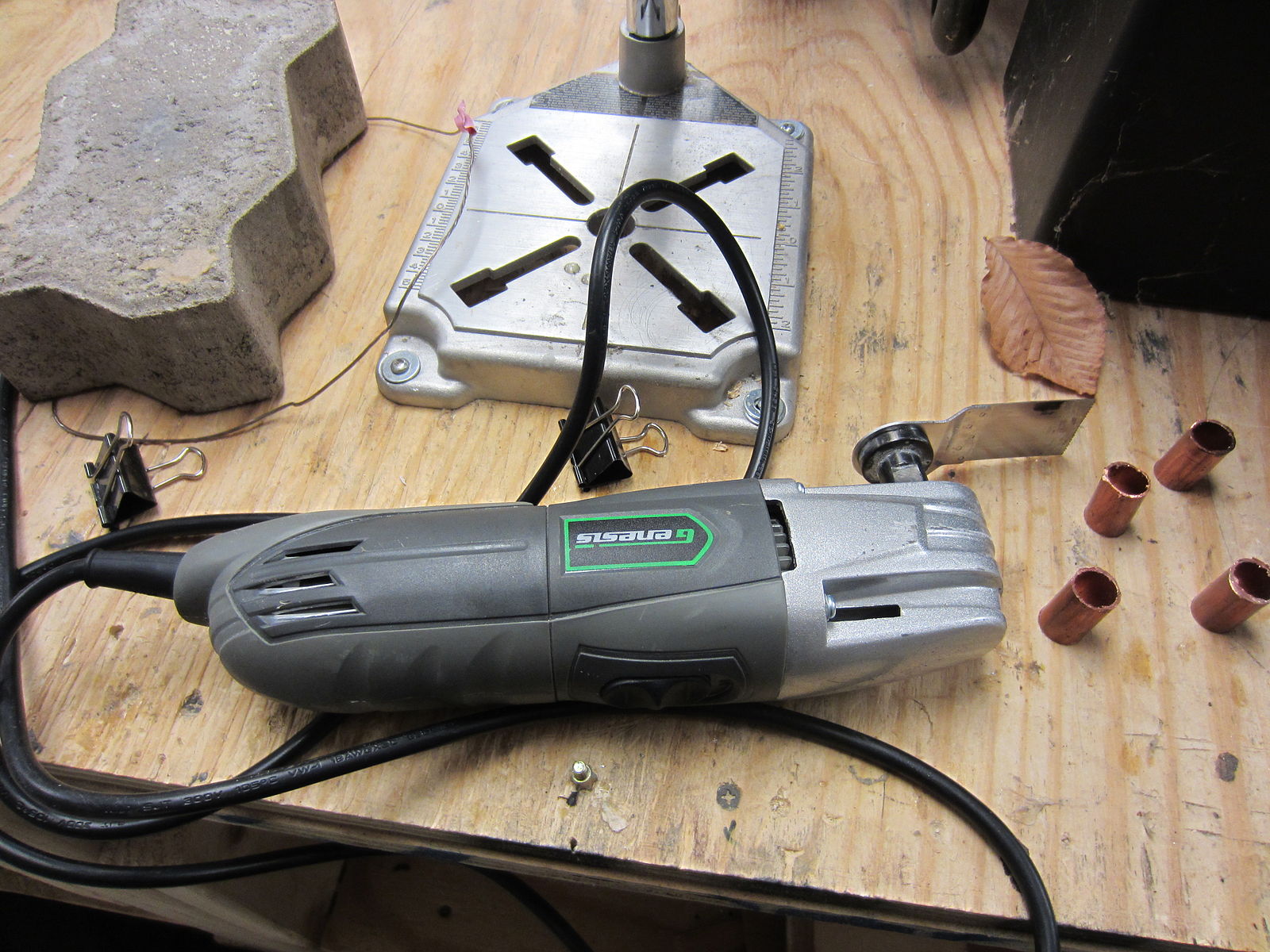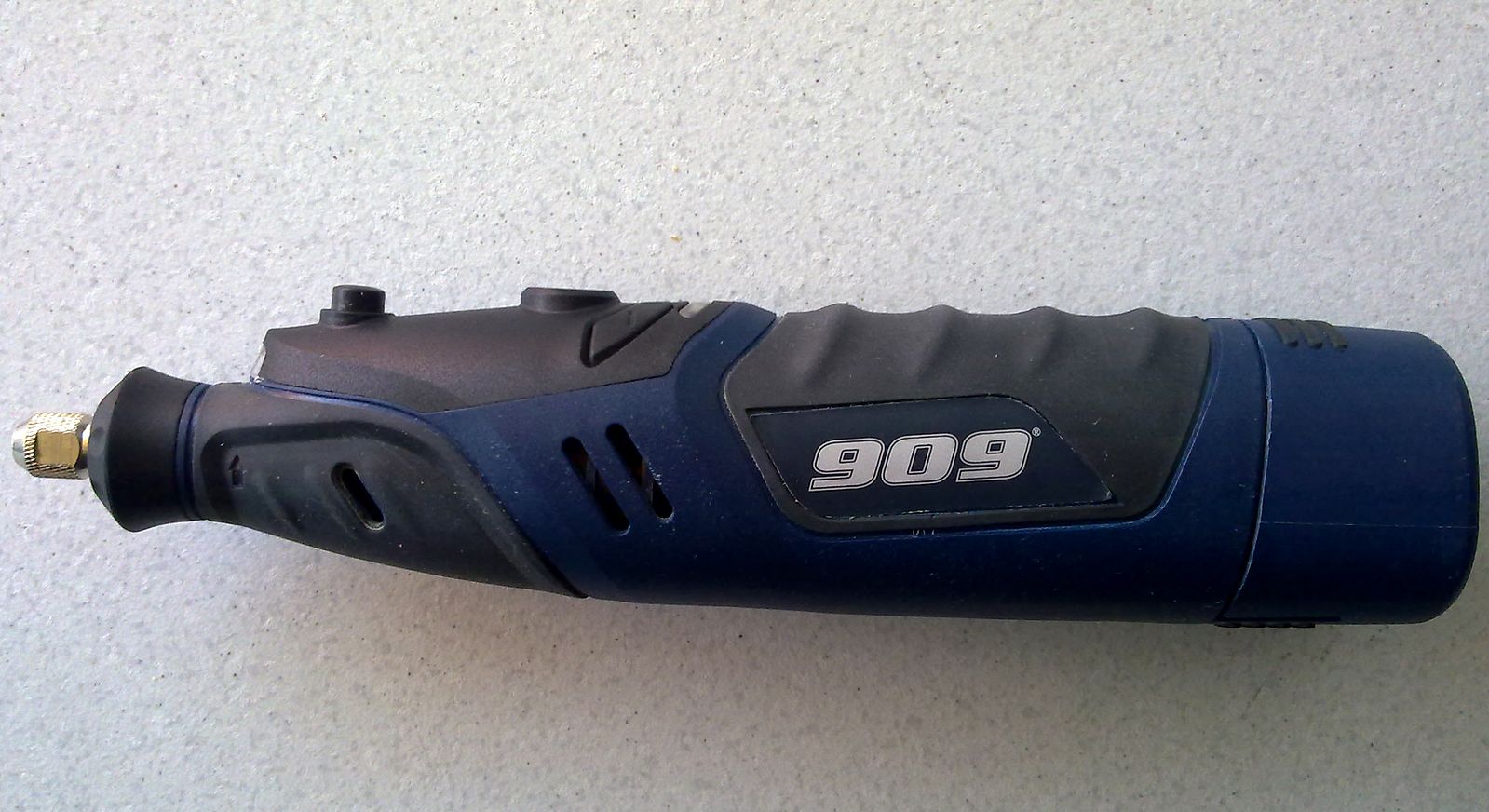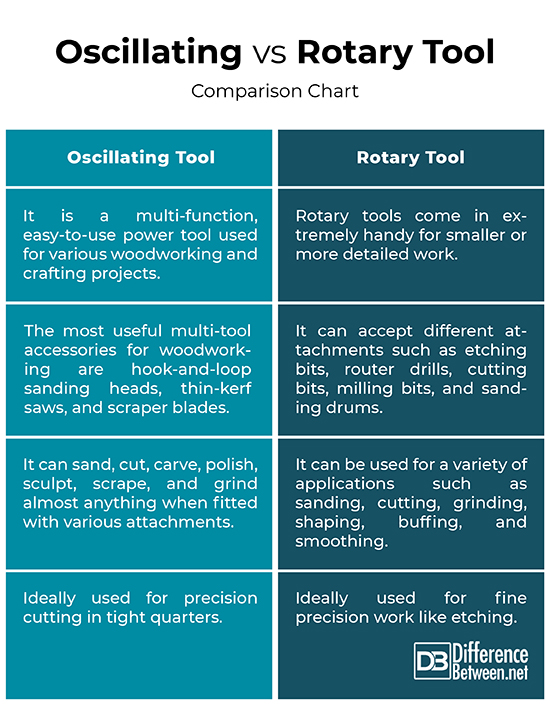Difference Between Oscillating and Rotary Tool
A typical deconstruction worker or craftsman will have an array of tools for a project. While hand tools and power tools may make up the majority of the tools used in the course of limitless home-improvement and DIY projects, it is important to understand that tools may take many different forms. It is important to understand that several tools could be used for a specific application. While some tools work better than others, some may be safer than others. For example, an angle grinder can be an important tool in removing large amounts of material quickly and effortlessly, but you can also use a bench grinder as well for more subtle shaping.
We’re here to talk about the two most common power tools used for a different set of applications – an oscillating tool and a rotary tool. While they both are quite similar considering they cast in the same mold and they both come in handy for all your sculpting projects, they are strikingly different. While an oscillating tool is a multi-purpose tool used for precision cutting in tight quarters, including plunge cuts, a rotary tool is not needed quite often but comes in handy for smaller or more detailed work. With the right attachments, an oscillating tool or a rotary tool may be all you need for most of the sculpting projects. Let’s take a look at some interesting distinguishing points between the two power tools.
What is an Oscillating Tool?
An oscillating tool is a multi-function, easy-to-use power tool used for quick and accurate work of jobs traditionally done by hand. The multi-tool was developed more than 20 years ago and was originally marketed as a hobby tool, but now it can do so many things. As the name suggests, the multi-tool can sand, cut, carve, polish, sculpt, scrape, and grind almost anything when fitted with various attachments, although it’s ideally used as a detail sander. It is a newer type of tool that generates tens of thousands of oscillations per minute with its vibrating head rotating back and forth 3 degrees, using a variable speed controller making it one of the safest power tools available.
What is a Rotary Tool?
A rotary tool is not needed quite often, but makes a big difference in a wide range of applications. Modifying things is what a rotary tool is really good at. They also come in handy smaller or more detailed work. It is a power tool with a small, powerful, high-speed motor and a rotary tip that accepts a vast array of bits designed for several different tasks, such as grinding, shaping, sanding, cutting, and smoothing. With the right attachments, a rotary tool may come in extremely handy for all your sculpting DIY projects. They are known for their incredible precision, only when in the hands of a professional handyman or craftsman. In the right hands, a rotary tool can do wonders.
Difference between Oscillating and Rotary Tool
Basics of Oscillating and Rotary Tool
An oscillating tool is a multi-function, easy-to-use power tool used for quick and accurate work of jobs traditionally done by hand. It is a battery-powered multi-purpose power tool that can work with a range of attachments. A rotary tool, on the other hand, is a power tool with a small, powerful, high-speed motor and a rotary tip that accepts a vast array of bits designed for several different tasks. Although a rotary tool is not needed very often, it can do wonders in the right hands.
Function
An oscillating tool generates tens of thousands of oscillations per minute and its vibrating head rotates back and forth 3 degrees, making it one of safest power tools available. One of its unique strengths is the ability to offset the angle of the tooling in relation to the grip, which comes in very handy in close quarters. A rotary tool has a small, powerful, high-speed motor with a chuck for accepting a variety of bits. Unlike a drill, a rotary tool is designed to tolerate sideways forces on the bit.
Attachments
A multi-function oscillating tool can accept a wide variety of attachments, such as sanders, blades, rasps, scrapers and grinders, making it an all-purpose power tool. The most useful multi-tool accessories for woodworking are hook-and-loop sanding heads, thin-kerf saws, and scraper blades, although it’s best known as a detail sander. With the right attachments, a rotary tool may come in extremely handy for all your sculpting DIY projects. It can accept different attachments such as etching bits, router drills, cutting bits, milling bits, and sanding drums.
Uses
An oscillating multi-tool was originally designed for construction and home-improvement tasks but over time, has gained popularity as a popular woodworking and crafting tool because of its accurate precision and ability to work in tight spaces. It can sand, cut, carve, polish, sculpt, scrape, and grind almost anything when fitted with various attachments. A rotary tool can do wonders, when in the right hands and can be used for a variety of applications such as sanding, cutting, grinding, shaping, buffing, and smoothing.
Oscillating vs. Rotary Tool: Comparison Chart
Summary of Oscillating vs. Rotary Tool
Well, the right tool makes all the difference in the right hands. With the right attachments, both the power tools can get almost every job done. While an oscillating tool is a multi-purpose tool used for precision cutting in tight quarters, a rotary tool is not needed quite often but comes in handy for smaller or more detailed work. An oscillating multi-tool, as the name suggests, can sand, cut, and grind almost anything when fitted with various attachments. A rotary tool is a high-performance power tool which is as good as the multi-tool and may come in handy for works that would require a high level of precision.
- Difference Between Caucus and Primary - June 18, 2024
- Difference Between PPO and POS - May 30, 2024
- Difference Between RFID and NFC - May 28, 2024
Search DifferenceBetween.net :
Leave a Response
References :
[0]Image credit: https://en.wikipedia.org/wiki/File:Cordless_Rotary_Tool.jpg
[1]Image credit: https://commons.wikimedia.org/wiki/File:Oscillating_Cutter.JPG
[2]Hart, Eric. The Prop Building Guidebook: For Theatre, Film, and Tv. Abingdon, United Kingdom: Taylor & Francis, 2013. Print
[3]Okrend, Larry. Black+Decker Small Space Workshops. Minneapolis, Minnesota: Cool Springs Press, 2017. Print



